Join an online Q&A session with the Director of Student Success to explore what your experience as an IIDE student will be like. Register Now.
Students Centric
Placements Report
Trackable results, real numbers
Reviews
Proven success, real voices
Trainers
Expert-led, Industry-Driven Training
Life at IIDE
Vibrant Spirit student life
Alumni
Successful Journeys, Inspiring Stories
Learning Centre
Webinars
Blogs
Case studies
Live, Interactive Masterclasses
Fresh Insights, quick reads
Real-life, Industry relevant
More
Hire from us
Hire Top Digital Marketing Talent
Work with us
Join Our Team, Make an Impact
Customised Training
Personalised digital marketing training for your company
Refer & earn
Simple, easy rewars
Contact us
Get the answers you need
About us
Know more about IIDE
Explore all course options
Trending
Professional Certification in AI Strategy
- Ideal for AI Enthusiast
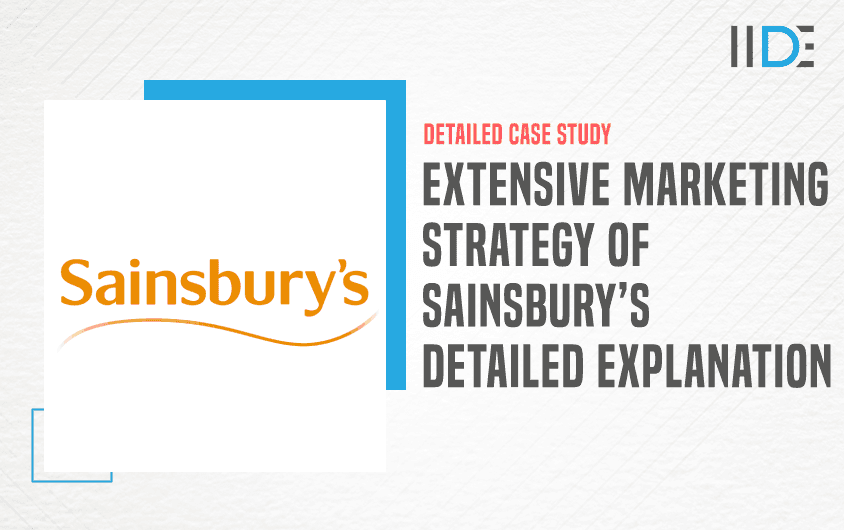
Updated on Dec 11, 2025
In a previous article, we saw the marketing strategy of Wysa, an Indian-based AI-enabled mental health application. In this article, we’ll discuss Sainsbury’s – a supermarket chain established in the United Kingdom.
The main objective of Sainsbury’s is to be fair with their suppliers and make a trustee environment, and that’s why Sainsbury’s keeps their first priority to provide the best food at a fair price and not focus on short-term gains.
So, today everyone is working digitally and Marketing has become the backbone of all companies in this digital world. So if you want to learn marketing you can check out this Free Masterclass on Digital Marketing by the CEO and founder of IIDE, Karan Shah.
Now, in this blog, we will be learning the detailed marketing strategy of Sainsbury’s. Before moving towards the marketing strategy of Sainsbury’s, firstly let’s look at the company’s story, target audience and digital presence.
About Sainsbury’s – Company Overview
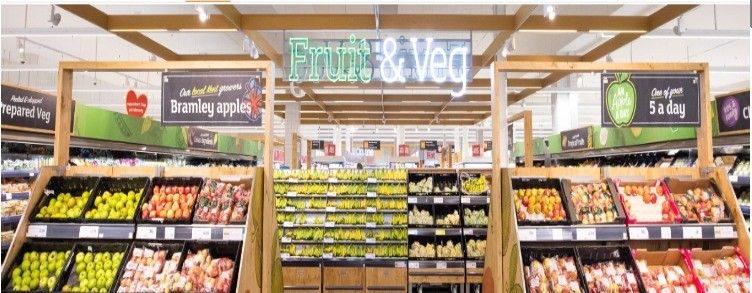
Sainsbury’s plc which people know as Sainsbury’s is the third-largest supermarket chain in the UK. This business was started by John James Sainsbury along with his wife Mary Ann in the year 1869. It started as a fresh food retailer and with time expanded into packaged food items.
In the year 1922, J Sainsbury was incorporated as a private company known as ‘J. Sainsbury Limited’. The company went public in the year 1973 and till then the company was completely owned by the Sainsbury family.
Between the years 1992-1998, Sainsbury’s had to undergo a downfall. The brand was relaunched in the year 1999 and from the year 2004 to 2006, they made sure to bring Sainsbury’s back to its place.
They not only tried to make it like before but grew it even more. Today, after going through so many ups and downs, J Sainsbury’s plc is split into three divisions: Sainsbury’s Supermarkets Ltd (including convenience shops), Sainsbury’s Bank, and Argos with over 600 supermarkets and 800 convenience stores.
| CEO | Simon Roberts |
|---|---|
| CMO | Mark Given |
| Area Served | The United Kingdom |
| Industry | Retailing |
| Market Share/ Revenue | $38.004B |
| Vision | To be the trusted retailer where people love to work and shop. |
| Tagline | Live Well for Less |
Current news of Sainsbury
- Sainsbury’s introduces Henry Holland x bags of ethics collection to support LGBTQ+ communities. Now, customers will also be able to buy British Designer Henry Holland’s x bags of ethics exclusive collection from now until September. The act (a charity that supports LGBTQ communities) will be provided a donation 0f £25000 from the new pride collection by the retailer.
- Sainsbury’s profits fall because of high inflation- but still maintain and lower the market expectations. Britain’s second-largest grocery chain reported a 5% annual fall in its profit as it took a hit from soaring costs but this is done to battle inflation for its customers.
User Persona

Buyer’s Persona
Name:
Kashish Jain
Place:
Delhi
Age:
20 years
Profession:
Student
Motivation
- Omnichannel presence
- Store networks
- Customer loyalty program
- Argos acquisition
- Diverse product offerings
Interest & Hobbies
- Cooking
- Playing football
- Singing
- Dancing
- Driving
- Painting
Pain Points
- Limited international presence
- Slow growth in market shares.
- Store size and format.
- Discount retailers.
Social Media Presence
- Youtube
- Klout
- Flickr
- Quora
Marketing Strategy of Sainsbury’s
Sainsbury’s has used both BTL and ATL techniques to sell its products in the consumer market. To establish its brand, it has run advertisements in newspapers, radio, television, billboards, and flyers. Its promotional strategy includes sales promotion via incentives and database marketing.
Let’s learn some more marketing strategies of Sainsbury’s:
Segmentation, Targeting, and Positioning
Sainsbury’s pricing strategy is built on giving customers “value for money,” which ensures that the quality of products and services is maintained, resulting in customer retention. It uses competitive pricing instead of price lowering because the latter only delivers a short-term gain in market share.
The target audience of Sainsbury’s is from 15 to 80 years. It is a supermarket chain and everyone wants all things to buy from one place and of the best quality so that’s why all people of this age used to go there for their comfort. But the main customer of the company is the family unit, especially Mother. Sainsbury’s does various advertisements on television to attract this segment.
Sainsbury’s is the second-largest grocery chain in the United Kingdom, accounting for a 16.0% market share of the supermarket sector. And, positioned itself in medium to high-end markets. Sainsbury’s has carved out a niche as a mid-to-high-end store. As a result, many of the company’s items have a premium price.
How does Sainsbury use Digital Marketing in its strategy?
Sainsbury’s has built a strong performance by brands which include Argos, Habitat, and Tu for improved Sales and profits, as the retailer announced a renewed digital push to maintain growth in its online sales.
Sainsbury, like other major retailers including Tesco and Boots, use the strategy to boost up more targeted and effective digital marketing by increasing loyalty scheme data. In September the group introduced its nectar prices scheme that offers digital nectar customers some discount on their purchase of its products.
This helps in increasing the overall sales of Sainsbury as now it has 8.2 million nectar users which proves that digital marketing is a more absolute platform able to communicate directly to customers.
Marketing and advertising Campaigns
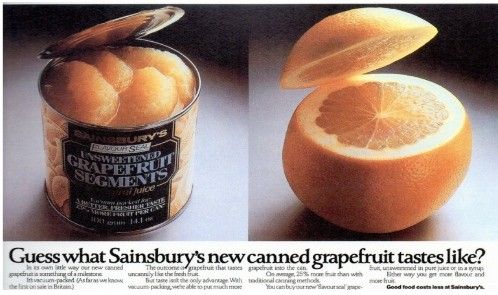
Sainsbury’s years ago has come up with different slogans to define what the brand is all about. Slogans like ‘It’s clean, it’s fresh at Sainsbury’s & ‘Sainsbury’s for Quality, Sainsbury’s for Value’ have shown the quality and protocols followed by Sainsbury’s when it comes to food.
The slogan “Good Food Costs Less in Sainsbury’s” has been described by BBC News as ‘probably the best-known advertising slogan in retailing’. Sainsbury’s advertised this slogan in the early 1980s to value their products by the tagline “Good Food Costs Less in Sainsbury’s”. The company wanted people to buy their quality products at a lower price.
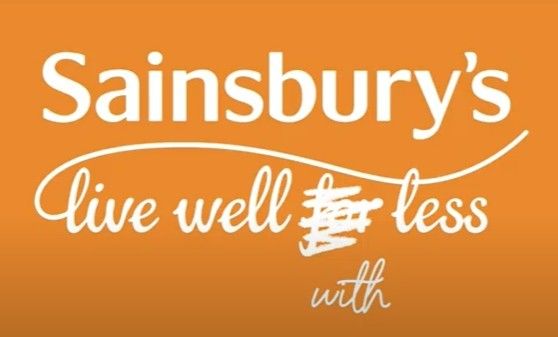
“Live well with less” – By Sainsbury’s was an awareness campaign more than a marketing campaign to tell the individuals how 10% of every week’s groceries end up being thrown out in a bin ultimately affecting the environment and our sea species.
To advertise these campaigns Sainsbury’s placed posters in and around Sainsbury’s doors and took the help of social media to promote it. To protect the environment, Sainsbury’s was taking 10% of food out of Sainsbury’s Taste the Different products and giving 10% back to nature by supporting projects of the environmental campaigning community Friends of the Earth.
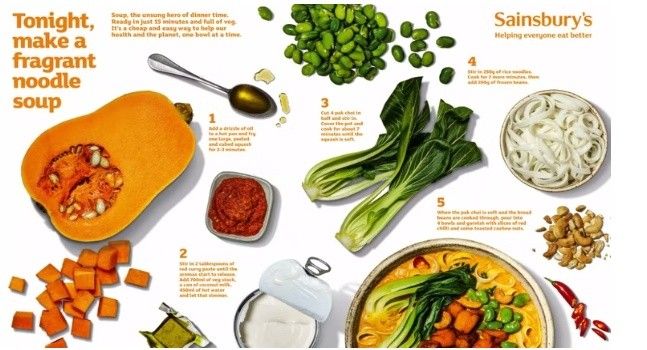
Sainsbury’s ‘Noodle Soup’ has been named the most creatively effective magazine ad of February in terms of public response, thanks to its attention-grabbing colors and brand-building capabilities.
Readers have “complete control” when consuming advertising within a magazine, so to make an impact, the creative must first grab attention, then “hook” the reader in to increase dwell time and maximize “depth of processing. This is a “key strength” of this particular advertisement. The Sainsbury’s ad is in the top 30% of all UK ads for its capacity to make readers stop and pay attention, thanks to its “bright, vibrant, and fresh-looking” images.
Top 5 Competitors of Sainsbury brand
- Associated British Foods is a diversified international food, ingredients, and retail group with sales Its ingredients division is the producer of sugar and baker’s yeast as well as other ingredients including emulsifiers, enzymes, and lactose.
- Morrisons operates retail supermarkets in the United Kingdom and is involved in in-store and online grocery retailing activities. The Company is involved in in-store and online grocery retailing activities.
- Tesco is a grocery and general merchandise retailer. This company provides retailing of clothing, electronics, books, furniture, toys, petrol, and software, financial services, telecoms, and internet services. Tesco also provides retail banking and insurance services.
- Aldi UK owns and operates supermarkets in the United Kingdom. It offers food, health, and beauty, household, pet care products, as well as drinks and specialty products, such as clothing, DIY, electrical, home and garden, sports and outdoor, and motor and travel products.
- Marks and Spencer Group plc (M&S) is a retailer of a variety of apparel, home products, and food items. Its product portfolio includes womenswear, menswear, kidswear, lingerie, cosmetics, home decor, bedding products, footwear, and home furnishings.
Example of a Failed Campaign Or Backlash from Viewers
What was the issue?
In November 2020, Sainsbury’s launched a Christmas advertising campaign featuring a black family celebrating the holiday season. While the campaign aimed to be inclusive and representative, it faced criticism and backlash from some quarters.
The issue was not with featuring a diverse family but with some individuals expressing their disapproval for what they believed was a forced or politically correct approach to diversity.
What backlash did Sainsbury face?
The backlash included criticism on social media, with some people expressing negative sentiments about the campaign. Some individuals claimed that it was an example of “virtue signaling” or that it did not represent the majority of Sainsbury’s customers.
What did Sainsbury do in this situation? – Did they take down the campaign or change it as a whole?
In response to the backlash, Sainsbury’s stood by its campaign and emphasized its commitment to diversity and inclusion. They defended their decision to feature a diverse family and highlighted their belief in reflecting the diverse customer base they serve. Sainsbury’s did not take down or change the campaign as a whole.
It’s important to note that public perception and reactions to marketing campaigns can vary widely, and what one group may see as a positive step towards diversity and inclusion, another group may perceive differently. In this case, Sainsbury’s chose to stand by its campaign and its message of inclusivity.
This ends the elaborative marketing strategy of Sainsbury’s. Let us conclude our learning below from the marketing strategy of Sainsbury’s.


Learn Digital Marketing for FREE
- 45 Mins Masterclass
- Watch Anytime, Anywhere
- 1,00,000+ Students Enrolled


Conclusion
In the Marketing strategy of Sainsbury’s, we see that Sainsbury’s believes in providing quality products at lower prices and this is the thing that makes Sainsbury’s a better supermarket company than others. Sainsbury’s doesn’t want short-term gains they have directly made long-term gains by gaining the trust of customers.
Digital marketing is crucial since it links a company with its clients when they are online and is effective across all sectors. It links businesses with ideal consumers through SEO and PPC on Google, social media marketing, and email marketing. If you would like to learn more and develop skills, check out IIDE’s 4-Month Digital Marketing Course to learn more.
Alternatively, you can enroll in one of our free online masterclasses led by IIDE’s CEO, Karan Shah, to gain insight into the field of digital marketing. We hope this blog on the marketing strategy of Sainsbury’s has given you a good insight into the company’s marketing strategies.
If you like such in-depth analysis of companies just like the marketing strategy of Sainsbury’s check out our IIDE Knowledge portal for more fascinating case studies. Thank you for taking the time to read the marketing strategy of Sainsbury’s, and do share your thoughts on this case study marketing strategy of Sainsbury’s in the comments section below. If you want to have a look at the case study of the D-Mart brand, here you go.
Want to Know Why 2,50,000+ Students Trust Us?
Dive into the numbers that make us the #1 choice for career success

Courses Recommended for you
MBA - Level
Post Graduate in Digital Marketing & Strategy
Best For
Fresh Graduates
Mode of Learning
On Campus (Mumbai & Delhi)
Starts from
Jan 5, 2026
Duration
11 Months
Live & Online
Advanced Online Digital Marketing Course
Best For
Working Professionals
Mode of Learning
Online
Starts from
Jan 5, 2026
Duration
4-6 Months

Online
Professional Certification in AI Strategy
Best For
AI Enthusiasts
Mode of Learning
Online
Duration
5 Months

Offline
Undergraduate Program in Digital Business & Entrepreneurship
Best For
12th Passouts
Mode of Learning
On Campus (Mumbai)
Duration
3 Years
Recent Post
- Top 14 Courses After 12th in Nashik 2025: Best Colleges, Eligibility & Career Scope
- Best 12 Courses After 12th in Raipur 2025: Top Colleges, Eligibility & Career Prospects
- 7 Best BBA Courses in Udaipur for 2025: Top Colleges, Fees & Career Prospects
- 8 Best BBA Courses in Raipur for 2025: Top Colleges, Fees & Career Prospects
- 8 Best BBA Courses in Nashik for 2025: Top Colleges, Fees & Career Prospects
- 5 Best Commerce Colleges in Udaipur 2025 - Fees, Scholarships, Placements & More
- 7 Best Commerce Colleges in Nashik 2025 - Fees, Scholarships, Placements & More
- Top 5 BMS Colleges in Raipur 2025 - Fees, Scholarships, Admissions & More
- 5 Best BBA Courses in Surat 2025: Top Colleges, Fees & Career Prospects
- Top 7 BMS Colleges in Ahmedabad 2025 - Fees, Scholarships, Admissions & More
Aditya Shastri leads the Business Development segment at IIDE and is a seasoned Content Marketing expert. With over a decade of experience, Aditya has trained more than 20,000 students and professionals in digital marketing, collaborating with prestigious institutions and corporations such as Jet Airways, Godrej Professionals, Pfizer, Mahindra Group, Publicis Worldwide, and many others. His ability to simplify complex marketing concepts, combined with his engaging teaching style, has earned him widespread admiration from students and professionals alike.
Aditya has spearheaded IIDE’s B2B growth, forging partnerships with over 40 higher education institutions across India to upskill students in digital marketing and business skills. As a visiting faculty member at top institutions like IIT Bhilai, Mithibai College, Amity University, and SRCC, he continues to influence the next generation of marketers.
Apart from his marketing expertise, Aditya is also a spiritual speaker, often traveling internationally to share insights on spirituality. His unique blend of digital marketing proficiency and spiritual wisdom makes him a highly respected figure in both fields.